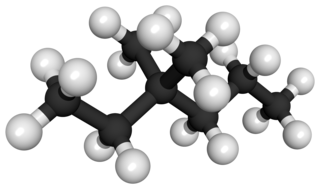
Trichomoniasis (trich) is an infectious disease caused by the parasite Trichomonas vaginalis. About 70% of affected people do not have symptoms when infected. When symptoms occur, they typically begin 5 to 28 days after exposure. Symptoms can include itching in the genital area, a bad smelling thin vaginal discharge, burning with urination, and pain with sex. Having trichomoniasis increases the risk of getting HIV/AIDS. It may also cause complications during pregnancy.

Potassium tartrate, dipotassium tartrate or argol has formula K2C4H4O6. It is the potassium salt of tartaric acid. It is often confused with potassium bitartrate, also known as cream of tartar. As a food additive, it shares the E number E336 with potassium bitartrate.

Trichomonas vaginalis is an anaerobic, flagellated protozoan parasite and the causative agent of a sexually transmitted disease called trichomoniasis. It is the most common pathogenic protozoan that infects humans in industrialized countries. Infection rates in men and women are similar but women are usually symptomatic, while infections in men are usually asymptomatic. Transmission usually occurs via direct, skin-to-skin contact with an infected individual, most often through vaginal intercourse. The WHO has estimated that 160 million cases of infection are acquired annually worldwide. The estimates for North America alone are between 5 and 8 million new infections each year, with an estimated rate of asymptomatic cases as high as 50%. Usually treatment consists of metronidazole and tinidazole.
Haycocknema perplexum are parasitic nematodes which reside in tissue under the skin or in blood vessels. The origin of their natural host is unknown. This group comprises 8% of nematode species affecting vertebrates.

Fumonisin B2 is a fumonisin mycotoxin produced by the fungi Fusarium verticillioides and Aspergillus niger.

Disodium citrate, also known as disodium hydrogen citrate, Alkacitron, and sesquihydrate, is an acid salt of citric acid with the chemical formula Na2C6H6O7. It is used as an antioxidant in food and to improve the effects of other antioxidants. It is also used as an acidity regulator and sequestrant. Typical products include gelatin, jam, sweets, ice cream, carbonated beverages, milk powder, wine, and processed cheeses.

Nitazoxanide, sold under the brand name Alinia among others, is a broad-spectrum antiparasitic and broad-spectrum antiviral medication that is used in medicine for the treatment of various helminthic, protozoal, and viral infections. It is indicated for the treatment of infection by Cryptosporidium parvum and Giardia lamblia in immunocompetent individuals and has been repurposed for the treatment of influenza. Nitazoxanide has also been shown to have in vitro antiparasitic activity and clinical treatment efficacy for infections caused by other protozoa and helminths; evidence as of 2014 suggested that it possesses efficacy in treating a number of viral infections as well.
Sodium citrate may refer to any of the sodium salts of citric acid :

Fluorenol, also known as hydrafinil, is an alcohol derivative of fluorene. In the most significant isomer, fluoren-9-ol or 9-hydroxyfluorene, the hydroxy group is located on the bridging carbon between the two benzene rings. Hydroxyfluorene can be converted to fluorenone by oxidation. It is a white-cream colored solid at room temperature.

Demeton, sold as an amber oily liquid with a sulphur like odour under the name Systox, is an organophosphate derivative causing irritability and shortness of breath to individuals repeatedly exposed. It was used as a phosphorothioate insecticide and acaricide and has the chemical formula C8H19O3PS2. Although it was previously used as an insecticide, it is now largely obsolete due to its relatively high toxicity to humans. Demeton consists of two components, demeton-S and demeton-O in a ratio of approximately 2:1 respectively. The chemical structure of demeton is closely related to military nerve agents such as VX and a derivative with one of the ethoxy groups replaced by methyl was investigated by both the US and Soviet chemical-weapons programs under the names V.sub.X and GD-7.

In chemistry, methanetetracarboxylate is a tetravalent anion with formula C5O4−8 or C(−CO−2)4. It has four carboxylate groups attached to a central carbon atom; so it has the same carbon backbone as neopentane. It is an oxocarbon anion, that is, consists only of carbon and oxygen.
Diethyl maleate is an organic compound with the CAS Registry number 141-05-9. It is chemically a maleate ester with the formula C8H12O4. It is a colorless liquid at room temperature. It has the IUPAC name of diethyl (Z)-but-2-enedioate.

3,3-Dimethylhexane is a colourless, odourless liquid, chemical compound in the family of hydrocarbons which has a formula of C8H18. It is an isomer of octane, where two methylene hydrogens at the third position in a hexane molecule have been replaced with two methyl groups.

EA-1763, O-PPVX, V1 or propyl S-2-diisopropylaminoethylmethylphosphonothiolate, is a military-grade neurotoxic organophosphonate nerve agent related to VX. It is part of the V-series. The substitution of a proton for methyl makes its properties more similar to those of VX.
Alkali citrate is an inhibitor of kidney stones. It is used to increase urine citrate levels - this prevents calcium oxalate stones by binding to calcium and inhibiting its binding to oxalate. It is also used to increase urine pH - this prevents uric acid stones and cystine stones.

Laccaic acids or laccainic acids are a group of five anthraquinone derivatives, designated A through E, which are components of the red shellac obtained from the insect Kerria lacca, similar to carminic acid and kermesic acid. This article focuses primarily on laccaic acid A (LCA).

Butoxyacetic acid is an aliphatic organic chemical. It is a liquid. It has the formula C6H12O3 and CAS Registry Number of 2516-93-0. It is REACH registered with the EC number 677-344-8. n-Butyl glycidyl ether is metabolized renally to this compound as is 2-butoxyethanol. Methods have been developed and papers published to detect the compound in urine and blood.

Isopropyl mercaptan is an organic compound with the formula C3H8S. It has the CAS Registry Number 75-33-2. It is REACH registered with the European number of 200-861-4. It is a water-white liquid with an extremely pungent odor resembling skunk spray or bad eggs. The odor means one use is as an odorizer. Despite this, it has Food and Drug Administration sanction as a food additive to add flavor. Another use is as a rubber additive.
















